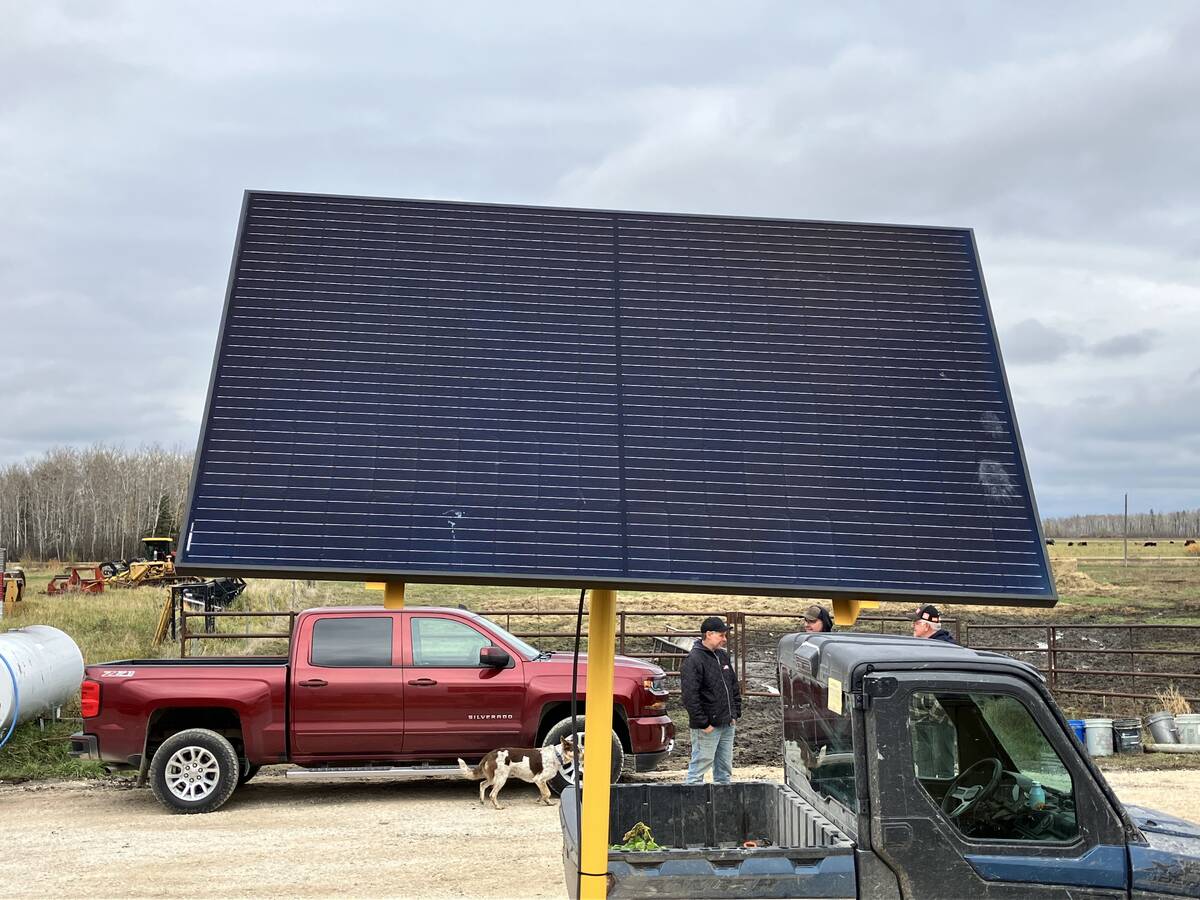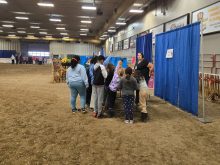When looking into any artificial insemination program, several goals must be kept in mind. Achieving pregnancies is of course the most important. Improving your genetic base is always a desire of any breeder whether you are a commercial operator or seedstock breeder. In order to be successful though, costs both for supplies and labour must first be considered.
Irregardless of all the programs available heat detection is still a very important key in overall success. Methods to assist in this are the use of detector patches, heat detector paint or marker (gomerized) bulls. The patches can lead to errors when they discharge from cows rubbing them on bush, and with light rubbing they can be partially discharged releasing some of the red colour. You want to see a complete red colour to verify a cow is in heat.
Read Also

VIDEO: Watering system a cattle health win
Portable livestock watering system helps Manitoba beef producer combat foot rot cases on pasture.
Gomers bulls can be very beneficial in smaller breeding groups. I have tried the numerous ways to create a marker animal including implanting open cows and juicing up steers with testosterone. The best procedure I have found is using a smaller, quiet bull, either from your herd or a known herd and performing an epididymectomy on him. Your veterinarian will know how to do this procedure. This is the simplest, most economical surgery and the bull can be shipped after that season. Use a poorer-grade animal, preferably with smaller testicles. The cost of the procedure is much cheaper than overwintering the bull till next season.
Chin ball markers are a great help but a word of caution — let the bull get used to the marker without any ink in it for several days. Otherwise fences, watering bowls and everything around will be marked till the bull gets used to wearing this new device. Changing ink colour can aid with errors in confusing cows already bred. Many colours of ink are available.
Even though these marker bulls are full-penetration breeders, disease risk is very low since virgin bulls are used from a known source. It has been found that the natural act of breeding with a gomer may increase the AI rates a small percentage as well. Marker bulls should not be considered if the group is too large or if synchronization is being done. Otherwise the bulls get overworked, burnt out and basically don’t know which way to turn. In the situation of large groups manual detection is still the best by spending time observing towards dawn or dusk.
Synchronization
Synchronization programs, if successful, concentrate heat-detection times over just a few days. If wishing to synchronize large groups of heifers, a program using MGA at 0.5 mg per head for 14 days, withdrawing it and either waiting for the second heat (first heat is not a fertile one), or using a prostaglandin 15 to 19 days after withdrawal of the MGA will synchronize most heifers. If your heifer pen is large you may want to stagger groups of heifers so calving does not overwhelm you the following year. Be warned this program does not work successfully in cows.
Several programs have been developed to synchronize cows; some are very labour intensive but conception rates can be very good. Hired labour for breeding can be utilized if AI is not done by the producer. One shot of prostaglandin if given sufficient time (at least 45 days) after calving should have 65 to 75 per cent of cows coming into heat over five days. Other programs use GnRh first followed by prostaglandins in seven days which will bring most cycling in over one to two days. The more elaborate CIDR or PRID programs have been talked about in other articles.
Other programs are available and each should be explored with your veterinarian for the best one suited to your operation. Make sure nutrition is adequate, phosphorus and energy are the two keys for cycling to occur.
The biggest mistake many producers make is to get caught up in the glamour of AI and lose sight of the fact they still need to get the cow or heifer pregnant early. It’s best to only AI for one or two cycles and then use good-quality clean up bulls. Heat detection is still desirable even if naturally breeding is occurring for several reasons. It ensures the cows are actually cycling.
Especially if new, young, virgin bulls are used, hand mating should occur for the first couple of breedings. This ensures these newcomers are actually getting a successful breeding in. Mark down dates on any breedings observed. This information can come in handy next year at calving if problems arise or if cows need to be induced. Only a very few cows should be coming back at the next heat otherwise the bull should be rechecked. I know of numerous incidences where diligent farmers have averted a disaster by carefully watching if cows were returning to heat.
These hints hopefully will allow you to have a successful breeding season with high conception rates while at the same time enjoying genetic gain. Happy breeding!















